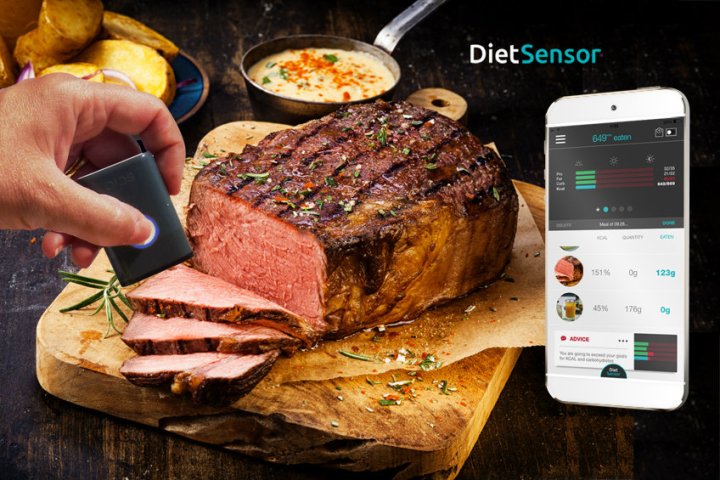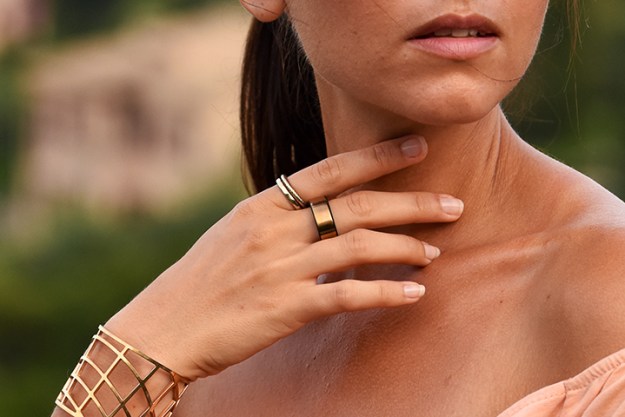
Of course, what makes the app truly stand out is the actual sensor. We took a look at SCiO, the handheld sensor that works with DietSensor, earlier this year at CES. It uses spectrometry for chemical analysis, in this case analyzing the way the unique molecules of food affect light. Hold it about half an inch from homogeneous food — food with the same texture as a glass of OJ, as opposed to mixed vegetables — and the sensor compares the near-infrared signature with patterns stored in the cloud. It will relay nutrient info to your phone via BLE (Bluetooth low energy) and create a food log in the DietSensor app. Snap a pic with your phone to complete the process. Calories, carbs, protein, fat, and alcohol levels are covered. At the very least, it handles the record-keeping hassle.
A sensor for food is generally handy when forging into areas where nutritional labels are scarce. Besides, nutritional labels are old fashioned in the face of this tech. Every once in a while, you might have to manually enter a meal that the sensor doesn’t recognize. In that case, you can look through DietSensor’s iPhone and Android app database of foods, scan a barcode, or enter it yourself. The cloud holds more than 600,000 different foods from 50 countries and is accessible in 19 languages, so no matter your native tongue, you’re unlikely to feel left out.
Once you’ve input the foods, DietSensor does the heavy calculations for you by figuring out what you should have more of or cut back on, and even the ideal times to eat, based on your health profile. Some of this might seem obvious, but you’ll be surprised at the detail that can go into a healthy diet. The app will coach you toward your nutrition goals using a progression chart with all your info.
DietSensor is aimed at people with conditions that require them to keep a close eye on their diet. SCiO with DietSensor can be especially helpful to diabetics, or people with cardiovascular disease. Of course, those struggling to lose weight and athletes trying to hit the pinnacle of physical fitness can make good use of DietSensor. And as the database grows, the uses for SCiO itself may grow beyond food.
Unfortunately, it’s not exactly tailored for people with allergies, since it deciphers the general content of food and may miss traces of materials that might prove harmful if someone is prone to severe reactions. Further, SCiO hasn’t set store shelves just yet, and the year is fast drawing to a close. DietSensor with SCiO is set at $250 for early bird pre-orders. The DietSensor app is free, and will launch next year.


